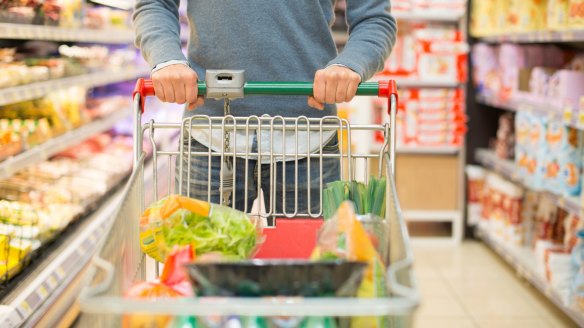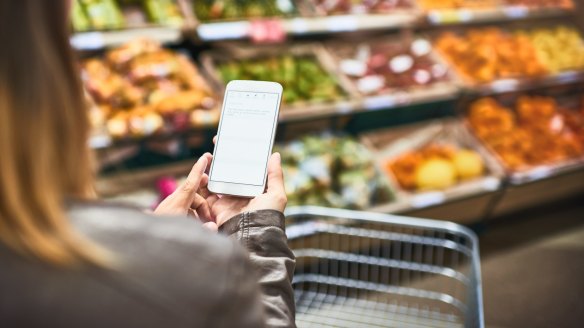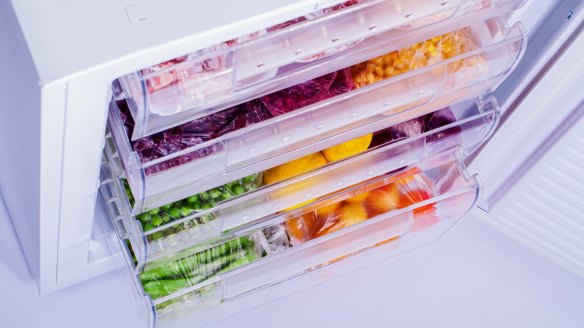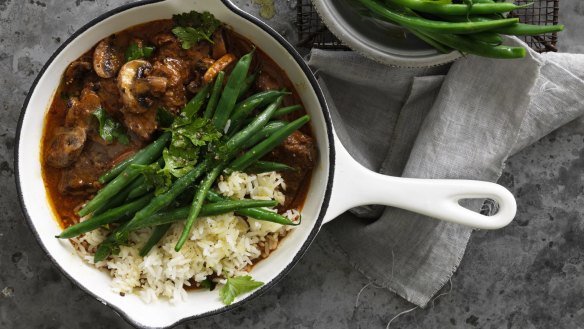Adam Liaw's tips for tackling the once-weekly supermarket shop

QUARANTINE COOKING
Now that isolation is becoming the norm in Australia, it's recommended that we shop for groceries and essentials just once a week.
If you're used to texting your partner at around 3pm to work out what ingredients to grab on the way home for dinner, a weekly shop can be a jarring transition.
As one of eight kids with both parents working and then commuting more than two hours per day, I grew up with a weekly shop and let me tell you – you have to be both organised and smart with what you buy and how you use it.
Here's how to do that.
Plan your menu
Planning out general idea of what you might want to eat for a week might surprise you. Under normal conditions we might grab lunch at work, or perhaps head out with friends for a bite, and only really have 10 or so meals at home a week. But when you're moving to three meals a day for a full seven days, 21 meals in a shopping trollley can look very different.

Make a list
Whatever shopping list app or back of envelope you're using at the moment, keep it going. And if you don't have a system, start one. Brain power alone isn't going to reliably guide you through a week of groceries, soap and loo roll as you try to navigate a supermarket, social distance and avoid touching your face all at the same time.
Store fruit and vegetables separately
Once you get all that food home, you need to keep it fresh. Most fresh produce will go 'bad' by overripening long before it rots or develops mould. Ripening is often controlled by ethylene gas.
Many common fruits (such as apples, pears, avocados, plums and tomatoes) produce ethylene while many vegetables (broccoli, cabbage, carrots, cauliflower, leafy greens and cucumbers) are sensitive to it.
Tomatoes, lettuce and cucumbers work together in a salad, but storing them together will result in squishy cucumbers and limp lettuce.

Salt meats early
A good habit to get into is seasoning meat (with salt) as soon as you bring it home. The salt will act as a dry brine and keep the meat more tender when you cook it, but it will also give you a few extra days of fridge life by reducing the surface bacteria.
If you want to go the whole hog, you can even try preserving your own meats at home by curing and drying them. I'm curing my own pancetta at the moment and it's working out wonderfully.
Fresh or frozen?
In terms of food preservation, your fridge and freezer both do the job of slowing bacterial growth. Treat them as a team. You can move foods from the fridge to the freezer, and vice versa quite safely. There will be some loss of quality in meats and vegetables after freezing, but they will be safe.
If you're planning on keeping uncooked meats for more than a few days, store them in the freezer. Move it from the freezer to the fridge the day before you need it. Put a tray under it, too, as frozen meats will release more liquid from burst cells as it thaws. If you defrost food in the fridge it keeps it out of the danger zone for bacteria growth (between 4C and 60C) and you can safely freeze it again if you'd like to.
Quick-pickling
Pickling doesn't just mean filling your pantry with jars for a rainy day. If I have some vegetables going limp or bendy in the crisper, I'll quick-pickle them by slicing them and putting them in a Ziploc bag with a sprinkle of salt, sugar and a dash of vinegar. Squeeze the air out of the bag and throw it in the fridge for even just an hour. This Japanese-style of quick pickling brings limp vegetables back to life in a crunchy and delicious form

Use or lose It
Keeping your food for longer is mainly the simple science of reducing bacterial growth over time. Cold temperatures slow bacteria. Salt, acid and sugar will kill some. Hot temperatures will kill bacteria, too.
The most foolproof way of stopping something going bad is just to cook it sooner. Don't just cook what tickles your fancy. Cook what you can and need to use. Eat more perishable foods first. Adapt recipes to make use of whatever you have.
If something is "on the turn", use it before it goes too far. If some vegetables are going rogue, braise them to kill bacteria and then freeze the braise as a base for stews or bolognese.
There are lots of ways to use what you have. Be creative, and be smart at the same time.
Appears in these collections
The best recipes from Australia's leading chefs straight to your inbox.
Sign up- More:
- How to
